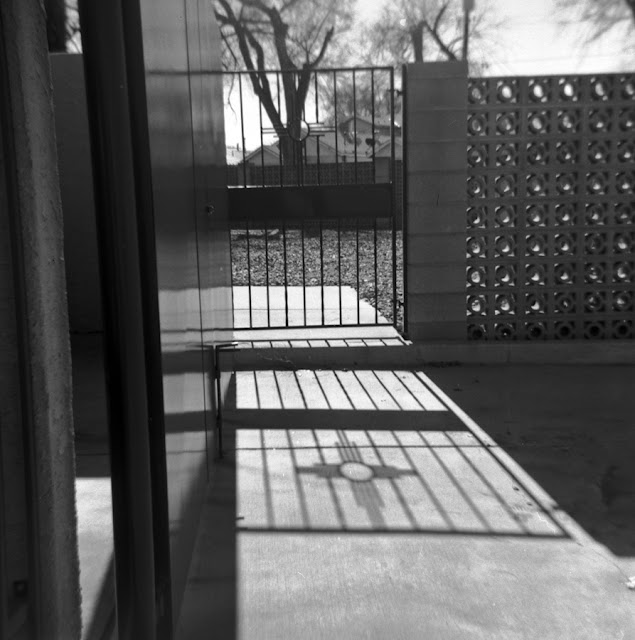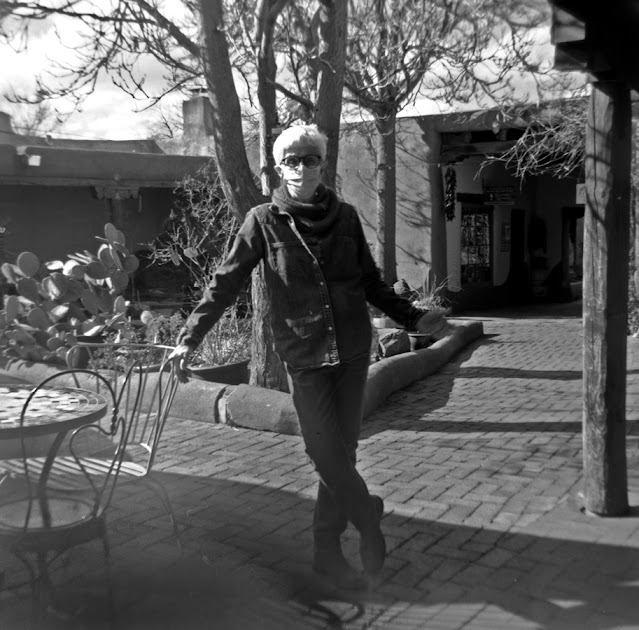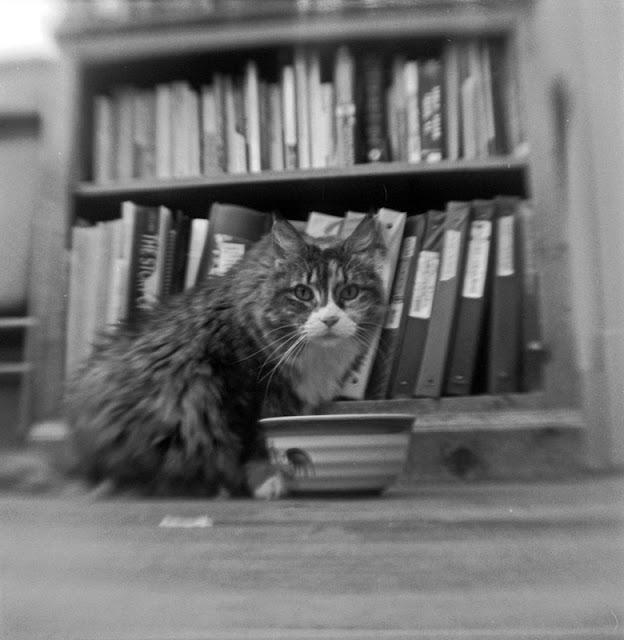I have never developed a good working relationship with my Box Tengor cameras. Zeiss Ikon gave them features which are seldom matched by other box cameras, and they are certainly stylish. While the aim was to give users enhanced capabilities in a relatively simple and inexpensive camera, that objective cannot be realized without applying a rather rigorous technical discipline in use.
The camera's weak point is the slow shutter (at best, a 30th of a second), combined with a rather awkward shutter release. What that means is that it is unlikely you will realize the resolution advantage of the two-element Frontar lens unless you use a cable release with the camera mounted on a tripod. The reflex viewfinders are a bit bigger and brighter than those of many pre-war box cameras, but provide nowhere near the compositional help of the brilliant finders of the post-war era.
Well, I knew all of the above when I took my Box Tengor 56/2 for a couple of walks recently, but I ignored my own advice and shot handheld in sometimes challenging light. Getting the depth of field right for the subject requires an exact pairing of discrete focal and exposure settings which often escaped me. Still, I thought some of the pictures from the roll of Acros showed a hint of the camera's capabilities. I'll take another stab at using one of the Box Tengors soon, though I've now shot my last roll of Acros, and that will introduce another variable into the test regime.
























